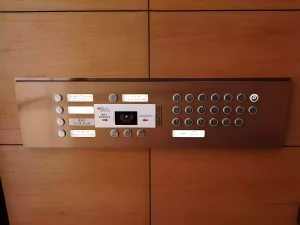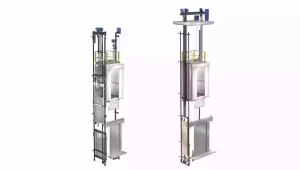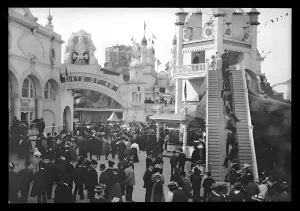A service elevator is essentially a reinforced passenger elevator, designed to carry both passengers and cargo. To meet higher load requirements, service elevators must not only comply with all the regulations for passenger elevators but also adhere to the specifications for freight elevators. This makes service elevators an indispensable vertical transportation tool in commercial, industrial, and medical buildings.
So why are more and more buildings opting for service elevators? What makes them different from traditional passenger elevators? The following content will answer these questions and help you understand how to choose the most suitable elevator solution based on your specific needs.
What is a Service Elevator?
A service elevator is a system designed specifically for transporting goods, equipment, or special items, and differs from traditional passenger elevators. Its design focuses on load capacity and durability, making it widely used in commercial, industrial, and medical environments.
Compared to passenger elevators, service elevators typically have higher load capacities and more durable components, enabling them to run efficiently under heavy workloads. The primary function of a service elevator is to provide quick and effective transport solutions for goods and equipment in various facilities.
For example, in shopping malls or hotels, service elevators are used to transport goods and equipment; in hospitals, they are responsible for moving medical devices and pharmaceuticals. This design focus is quite different from passenger elevators, which prioritize passenger comfort and safety, while service elevators focus on efficient transport and stable operation.
Types of Service Elevators
Service elevators can be categorized based on their drive mechanism, usage, and installation location. Understanding the different types helps in selecting the most suitable elevator for your needs.
Traction Service Elevators
Traction service elevators are the most common type, driven by an electric motor and using cables and pulleys, suitable for mid-rise to high-rise buildings. They offer higher load capacities and smoother operation, making them ideal for transporting heavy equipment and large goods. These are often found in commercial buildings and warehouses.
Hydraulic Lifts
Hydraulic lifts use a hydraulic system, making them ideal for low-rise buildings. They are cost-effective, durable, and stable, and they are widely used in logistics and industrial settings. Hydraulic elevators provide smooth and safe transport, particularly for heavy goods.
Machine Room-Less (MRL) Service Elevators
Machine Room-Less (MRL) service elevators eliminate the need for a traditional machine room, with the motor and control systems installed directly within the elevator shaft. This innovative design saves space and energy, making MRL service elevators increasingly popular in modern commercial and residential buildings.
By understanding the different types, you can select the best elevator for your needs, ensuring optimal efficiency in real-world applications.
As mentioned earlier, selecting the appropriate type of service elevator is key to ensuring its efficient performance in specific environments.
Which Buildings Are Suitable for Service Elevators?
Service elevators can be customized to meet the specific needs of different buildings, enhancing the transport of goods and equipment while ensuring safe and efficient operations.
Commercial Buildings
In commercial settings such as shopping malls, office buildings, and hotels, service elevators are essential for transporting goods. For example, hotels need to move linens, towels, and other items to various floors quickly, while shopping malls require the movement of large quantities of goods.
Service elevators, compared to traditional passenger elevators, are designed for higher load capacities and more frequent use. For instance, some malls use service elevators capable of carrying up to two tons, ensuring smooth operations even during peak periods.
Industrial Environments
In industrial environments like warehouses and factories, service elevators are designed for heavy-duty use. They often have large load capacities, ideal for transporting heavy equipment and materials. For example, a large warehouse might have a service elevator with a capacity of over 3 tons, ensuring smooth and efficient movement of goods. Hydraulic elevators are often used in these environments due to their ability to handle irregularly shaped or sized items.
Medical Facilities
Service elevators in hospitals and clinics are vital for transporting medical equipment, pharmaceuticals, and beds. Modern hospital service elevators can carry up to four hospital beds while simultaneously transporting medical supplies, reducing the need for manual labor and ensuring timely deliveries.
Compared to passenger elevators, service elevators in hospitals are larger and designed for high load capacities, effectively meeting the needs of busy medical environments.
Special Use Locations
In specialized areas such as museums, theaters, and the food industry, service elevators are used not only for everyday items but also for transporting valuable goods and artwork. For example, in a museum, service elevators are designed to transport delicate artwork, ensuring it remains undamaged. In the food industry, these elevators must account for temperature control to maintain food quality.
Differences Between Service and Passenger Elevators
Although service and passenger elevators may look similar, they differ in design, function, and application. Service elevators are built for transporting goods, equipment, and heavy items, while passenger elevators are designed primarily for people. Here’s how they differ:
Capacity and Design
Service elevators are typically designed with larger cabins and higher load capacities, enabling them to carry heavier and bulkier items. Passenger elevators, on the other hand, prioritize comfort and space layout, making them suitable for lighter use. Service elevators can carry up to two tons, while passenger elevators are usually limited to 800 kg to 1 ton.
Usage and Function
Passenger elevators prioritize quick passenger flow and comfort, while service elevators focus on transporting goods and heavy items. Service elevators often have wider doors and are designed for efficient operation in high-traffic areas, such as factories or shopping centers. These elevators are faster and more efficient in moving goods, ensuring smooth operations in environments that require frequent transport.
Durability and Maintenance
Service elevators are designed for high-load environments and frequent use, making them more durable and easier to maintain than passenger elevators. The durability of service elevators reduces the need for frequent repairs and minimizes downtime. Passenger elevators, while focusing on comfort, tend to require more maintenance due to their focus on aesthetics and comfort.
For more information on the differences between service elevators and passenger elevators, please visit:Service vs. Freight Elevator: What’s the Difference?
Key Factors in Choosing a Service Elevator
When selecting a service elevator, several key factors must be considered, impacting performance, user experience, and long-term maintenance costs.
Load Capacity
Load capacity is one of the most crucial factors. It’s essential to determine the elevator’s load capacity based on the type of goods to be transported. Commercial buildings may require elevators with high load capacities, while industrial settings often need elevators designed for heavy equipment and materials.
Dimensions and Space
The size of the service elevator should align with the available space, especially in buildings with limited space. Proper planning of the elevator’s dimensions and installation location is crucial to optimize space and improve operational efficiency.
Speed and Efficiency
Speed and efficiency are important, especially in environments where large quantities of goods are moved. High-speed elevators improve efficiency in warehouses and logistics centers. However, in settings where speed is less of a priority, durability and stability are more important.
Safety and Compliance
Ensuring that the service elevator meets safety regulations is essential, particularly in medical and industrial environments. Compliance with safety standards reduces risks, helps avoid legal issues, and ensures a safe working environment.
Service elevators are integral to modern commercial, industrial, and medical settings. Their high load capacities, durability, and efficiency make them indispensable in many environments.
If you are looking for a suitable service elevator solution, please contact BDFUJI for more customized options or quotations.













